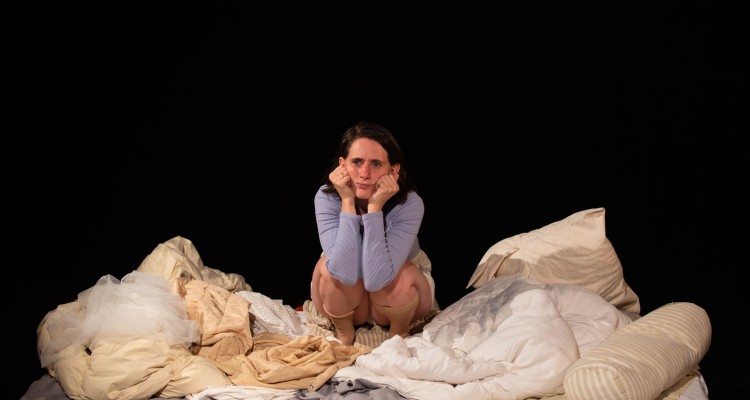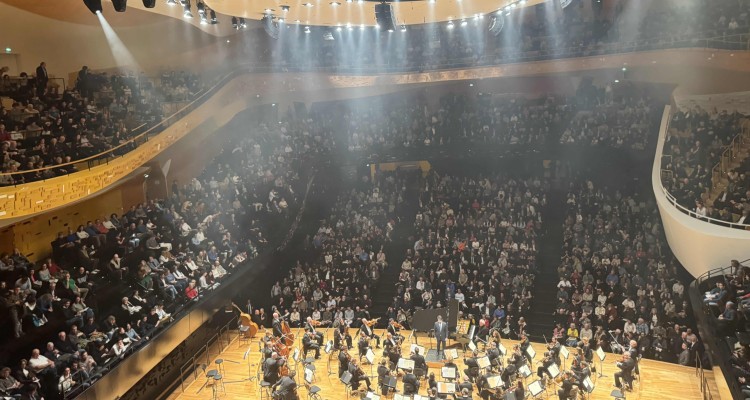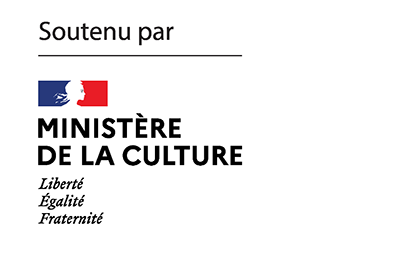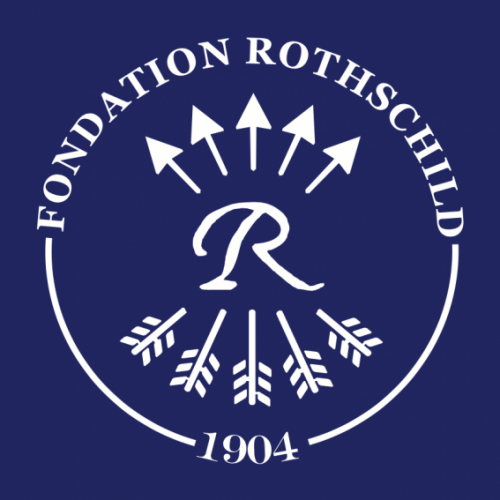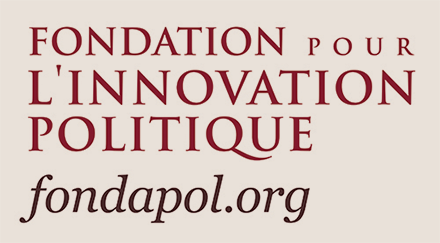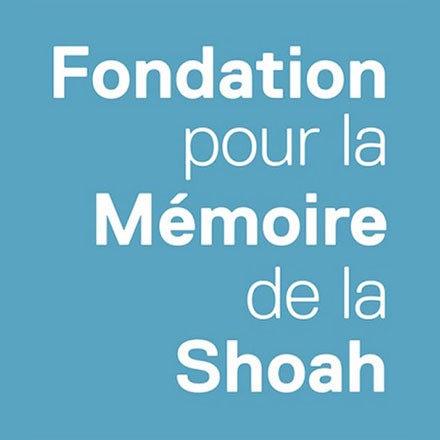In 1926, Samuel Schwarzbard assassinated Symon Petloura, the general-in-chief of the Ukrainian nationalist revolution, whose men were responsible for about 40% of the exactions committed during the pogroms that struck the Ukraine during the civil war (1918-1926). Paul Celan was born in Czernowitz, where Schwarzbard lived for a time and is now in Ukraine. Part of his poetry evokes “the widest of rivers”, the long history of anti-Semitic crime that links the history of pogroms to that of the Shoah. Ivan Segré dives into Celan’s poetry and questions, from it, a memory of the Ukraine like the gesture of Samuel Schwarzbard.
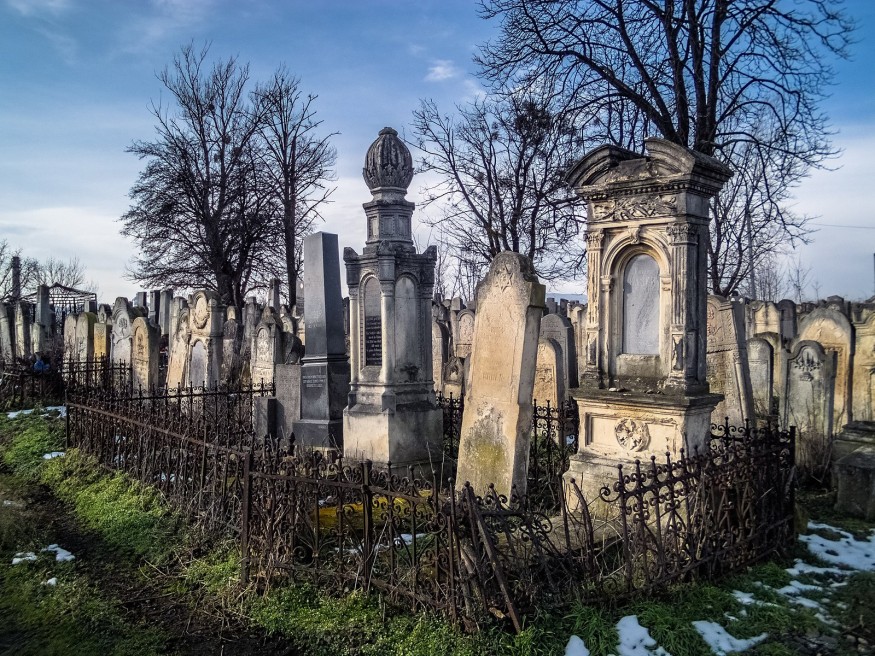
“a cloth, to wrap myself in, when it shines helmets”
Paul Celan, « Black Flakes »[1]
In Paris, at 6 rue de Palestine, is the Symon Petloura Ukrainian Library, founded in 1926. Its current president, Jaroslava Josypyszyn, recounts its history in an article published in November 2017 on the “Ukrainian Immigration in France”[2] website, a few days after a monument to Petloura (or Petliura, or Petliura, depending on the transliteration from Ukrainian) was unveiled in Vinnitsa, Ukraine, in a part of the city formerly known as Yerusalimka (Jerusalem), in other words, in a neighbourhood that was once “Jewish”. Some saw this as a provocation; others saw it as the legitimate construction of a national memory, as Symon Petlura, the general-in-chief, the ‘hetman’ of the nationalist revolution of 1918-1921, was considered a hero by many in Ukraine.

After the defeat of the nationalist armies and the capture of Kiev by the Red Army, Petlura took refuge in Paris, where he conceived the project of founding a Ukrainian library, the aim being to assert Ukraine’s belonging to Europe: « Yes, we are European territorially, physically and psychologically. We are European in our conception of the world and in our traditions inherited from our ancestors. » Alas, the “hero” of the nationalist revolution could not carry out his project, since he was assassinated in Paris by “an agent of Moscow”. At least, this is what the current president of the Ukrainian Library Symon Petloura asserts in the article in question. In doing so, she repeats an argument put forward by the civil parties at the trial of his murderer, Scholem Schwartzbard, in 1927, an argument that has become a commonplace in Ukrainian nationalist historiography.
Was Schwartzbard an ‘agent of Moscow’? While he was certainly a revolutionary, anarchist and communist agitator, his motives were, according to him, intimately personal: he considered Petlura to be responsible for the antisemitic pogroms committed by the nationalist armies during the civil war. Schwartzbard had lost fifteen members of his family. So it does not seem likely that he had to obey an order from Moscow.
Was Petlura responsible for the antisemitic pogroms in Ukraine during the civil war (1918-1921)? The situation was anarchic at the time, with the country falling prey to armed bands of all colours: the “whites”, counter-revolutionaries loyal to the Czar; the “reds”, Trotskyist and Leninist revolutionaries; the “blues and yellows”, Ukrainian nationalists; and finally forces loyal to the political authority installed in power by the German armies occupying Kiev. And it seems that each of these armed forces was guilty, to varying degrees, of antisemitic murders. However, according to historians who have studied the question, Petlura’s men were the most zealous pogromists, being responsible for about 40% of the antisemitic exactions that cost the lives of tens of thousands of Ukrainian Jews (between 60,000 and 200,000 according to estimates). What remains debated, however, is whether Petlura pushed his men to commit crimes or whether he sought to prevent them from doing so, unless, quite simply, he considered the question secondary to what mattered at the time, namely the Ukrainian nationalist revolution and the conviction that carried it forward: « Yes, we are European territorially, physically, psychologically. »
In any case, in his General History of the Bund, Henri Minczeles observes: “The armies of Kolchak, Denikin and Petliura, with the benevolent tolerance of the Directory, the supreme authority of the [Ukrainian] state, made the whole world nauseous. The pogroms of 1919 and 1921 were infinitely more deadly than those of the tsarist period of 1880 and 1905. [Not since the Chmielnicki massacres in 1648 had the Jewish community experienced such a tragedy[3].
After his trial in Paris, Schwatzbard was acquitted. His lawyers succeeded in transforming the trial of the murderer into a trial of the victim, who was deemed responsible for the pogroms. And so, from Schwartzbard’s defence was born the Ligue Contre les Pogromes, which later became the LICA, then the LICRA.
Today, Petloura is honoured in Ukraine, while Schwartzbard is honoured in Israel (banned from Palestine by the British, he died in 1938 in South Africa, and his remains were transported to Israel in 1967). Does this mean that everyone has to see what they can do? It is indeed a question of perspective, that is to say, ultimately, of the library. And rather than being a historian[4], we propose here to approach the question in the light, subjective by definition, of literature.
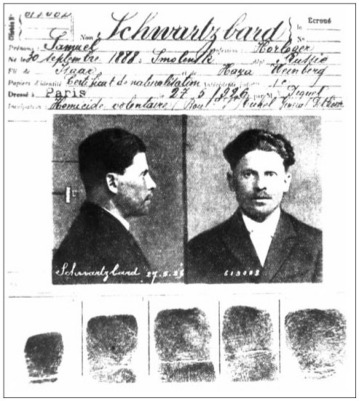
*
Paul Pessach Antschel, alias Paul Celan, was born in 1920 in Czernowitz, in Bucovina, then located in Romanian territory. Czernowitz became Russian after the war and is now in Ukraine. A monument has been erected there in memory of the poet[5]. Although modest in size, it is sufficient to challenge the monuments erected elsewhere to the glory of the Cossack Chmielnicki, the “hetman” Petlura or the nationalist Stepan Bandera, three eminent figures of Ukrainian nationalism whose feats of arms and/or ideology marked the history of anti-Semitic persecutions (respectively in 1648-1650, in 1919-1921 and in 1941-1944).
During the Second World War, Celan’s parents were deported from Czernowicz to a camp in Ukraine, where they were murdered by the Nazis. The traumatic event is evoked in Le Sable des urnes (1948), a first collection that Celan immediately withdrew from sale because of the typos that litter it. But some of the poems in it were to be included in the next collection, Pavot et mémoire, published in 1952, including this one:
« Aspen tree, your leaves gaze white into the dark / My mother’s hair ne’er turned white. / Dandelion, so green is the Ukraine. My fair-haired mother did not come home. […] »[6]
The “aspen”, a tree of the poplar family, is so named because its leaves shake at the slightest rustle of the wind; and if its leaves are green, its fruits are seeds covered with a fine white down, like a hair of snow. There are many legends associated with this tree, and some say that the Cross Wood is derived from it. Later in the poem it says: « Round star, you coil the golden loop. / My mother’s heart was seared by lead. » The star that signals the birth of Jesus to the Magi in Matthew’s Gospel is matched by the star that evokes the blondness of the poet’s mother, a victim of the Holocaust by bullets.
“« Löwenzahn, so grün ist die Ukraine » ; « Dandelion, so green is the Ukraine“. In German as in French, “dent-de-lion” designates a flower, the dandelion, whose particularity is to bloom again as soon as the snow melts: because it is deeply rooted in the ground, only its upper part dies during the icy season, so that it blossoms again at the first light of spring, it’s blondness appearing to emerge from the winter, as if resurrected. The yellow of the dandelions thus announces the future greenness of the Ukrainian meadows, in a comparison whose apparent paradox evokes Eluard’s line: “the earth is blue like an orange”. But the colour of this flower is also, and primarily, an evocation of the blondness of Celan’s mother, who died in Ukraine.
Another poem in the same collection begins with these words: ‘In the cherry-tree’s branches a crunching iron shoes[7]‘. And it concludes with these words: ‘It’s for him that the cherry bleeds’. In an article entitled “Celan, les eaux du Boug”, Marc Sagnol, former director of the French Institute in Kiev, relates his journey on the traces of the murder of the poet’s parents and quotes this poem. He explains that “Mikhailovka and the Cherry Orchard” refers to the place where Jews deported to Ukraine from Czernowitz were murdered: “The editor of the Posthumous Works, Barbara Wiedemann, assumes in her commentary that the word ‘cherry orchard’ refers to Chekhov’s play, but it is rather a testimony to Celan’s reading of Daghani’s book The Grave is in the Cherry Orchard, his diary of Mikhailovka, where the ‘liquidation’ of the camp is mentioned at the end. If the “cherry orchard” cannot fail to evoke Chekov’s play, Wiedemann’s error of assessment is all the more glaring, however, since in another posthumous poem, this time dated 1959, Celan writes: « Far away, in Mikhailovka, in / the Ukraine, where / they murdered my father and mother: what / flowered there, what / flowers there?[8]». We saw the answer in the poem from Poppy and Memory: “It’s for him that the cherry bleeds”. The redness of the garden fruit is an intimate wound, as is the blondness of the dandelion in the Ukrainian snow. From then on, Celan had to overcome the abyss of the senseless, and reinvent the poem, in order to regain the saving power of the word “flower”.
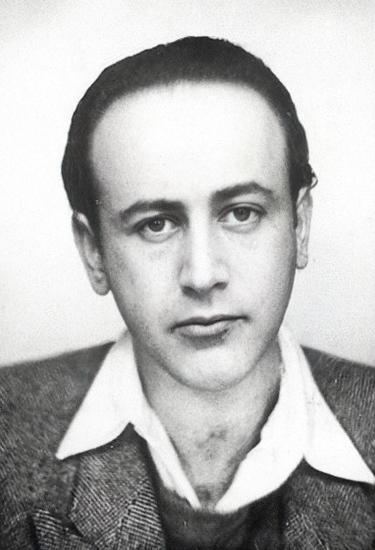
From the first collection, The Sand of the Urns, one poem in particular illuminates the light with which the cherry orchard is bathed: ‘Schwarze Flocken’, ‘Black Flakes. Jean Bollack proposed a translation in an article entitled “Le testament d’Ukraine”. He introduces it with these words: ‘In 1943, in the Romanian labour camp where he was interned, Celan wrote a poem containing a poetic message that, in the fiction of the text, his mother sends him from the East. It is the announcement of his father’s death:
Snow fell, lightless. One moon
it has been or two, that autumn in monkish habit
brought news to me too, a leaf from Ukrainian scarps:
“Think, that here too it winters, for the thousand’s time now
in the country where the widest river flows:
Jaacob’s heavenly blood, blessed by axes…
O ice of unearthly redness — there wades your Hetman with full
retinue in the darkening suns… Child, oh a cloth,
to wrap myself in, when it shines helmets,
when the clod, the pinkish one, breaks open, when snowy your father’s
bones scatter, under the hoofs crush
the Song of the Cedar…
A scarf, a narrow scarflet, that I safeguard
now, as weeping you learn, on my side
the narrowness of the world, that never greens, my child, your child!”
Mother, autumn, it bled away for me, the snow, it burned me:
search for my heart I did, that it may weep, the breath I did find, oh that of summer,
like you it was.
Came my tear. Wove I the scarflet.[9]
What can a « sheet » (“Tuch”), a narrow scarflet, a piece of cloth (“Tüchlein”), do against the armour of the horsemen, their “axes” and their “helmets”? And first of all, what is this “sheet”? It is what the mother wraps herself in, presumably to cover her nakedness, and what the poet, at the end of the poem, undertakes to ‘weave’; it is therefore her work. It is also, more prosaically, the handkerchief that catches tears. And finally, it is inevitably the traditional prayer shawl, the talith with which the deceased is wrapped in the Jewish tradition. The murdered father, thrown into the mass grave, was not wrapped in his shawl: “snowy your father’s bones scatter“. In weaving this « scatter », is the poet working towards the resurrection of the father, in a vision related to that of Ezekiel? Is the counting of the moons at the beginning of the poem not an allusion to the Hebrew calendar, which focuses on the rebirths of the moon?
But the German ‘Tuch’ is also, and perhaps primarily, to be understood in the light of Yiddish: ‘Tukh – טוך’, a small garment, or cloth, especially the cloth with which the bread on the Sabbath table is covered. And in the context of the poem, the word inevitably refers to a popular Yiddish expression (gleaned from an English-language site): “Kozakn forn, falt dos fartekh (קאזאקן פארן, פאלט דאס פארטעך) – When Cossacks are marauding, the apron falls (i. e. out of fear, people drop what they’re doing and run)”. Let’s translate: “When Cossacks are marauding, the aprons fall”, i.e. every Jew stops his activity and goes into hiding.
Let us return to the poem:« the widest river» is not so much the Jordan, as a Yiddish song calls it, but the long history of anti-Semitic crime from the Cossacks to the Nazis; and going back even further in time, this river has its source in Psalm 74, where Israel’s “adversaries” enter the Temple precincts, impose their “emblems” and “brandish the axe”. Faced with the horsemen of the apocalypse, what weapon does the poet have? A thin fabric, which he weaves. The fabric of language, or more precisely of a language, in which the popular Yiddish expression “when the Cossacks prowl, the aprons fall” resounds. But Celan, in a turn that would become his own, revisits the form and meaning, since far from dropping the apron-drap and fleeing to hide, the mother wraps herself in it and the son weaves it to build his work.
In a sense, taking up and inverting the Yiddish proverb, Celan writes his own “song of the cedar” as a tribute to his father, who converted to Zionism. It is obviously not a nationalistic and warlike song. But it is indeed, through the poem, a question of looking at history right in the eye. And in the Ukraine of the 1940s, history is thus that of a continuity from the anti-Semitic pogroms perpetrated by the Cossacks led by Chmielnicki (or Khmelnitski) to the genocide perpetrated by the Nazis and their Romanian, Lithuanian or Ukrainian collaborators.
The fact remains that Celan did not withdraw, if not disown, this admirable poem. No doubt he still considered it too indebted to an aesthetic and a lyricism from which it would be necessary to free himself in order to reinvent, “after Auschwitz”, the poem, and particularly the German-language poem.
It was with La rose de personne, published in 1963, that his work became one of the most important of the 20th century. In it he reinvents not only the German poem, but also the “psalm”: « No one kneads us again out of earth and clay, / no one incants our dust. / No one. / Blessèd art thou, No One. / In thy sight would / we bloom. / In thy / spite ». « No one», en allemand « Niemand »
“Who is ‘No one’, in German ‘Niemand’? This is probably the question that no one can claim to know the answer to. On the other hand, the question is: who is it? And not: what is it? As Martine Broda notes in her commentary on “Interview in the Mountains: « [Celan] compares nature to a language that excludes the Jew. » And by way of illustration, she quotes this statement from the Interview about an ontology without otherness: ‘a language of always, without I and without You, nothing but Him, nothing but That, do you understand’. In contrast to the ‘language that excludes the Jew’, Celan’s poem is addressed to a ‘You’. And this, according to Broda, is what justifies the dedication of The Nobody’s Rose to the poet Ossip Mandelstam, who died in deportation under Stalin. On the subject of a theoretical writing by Mandelstam, On the Interlocutor, she explains:
Never perceptible in the Blot translation, which is not literal enough, an opposition works on the interlocutor in his original language, right through. Celan was undoubtedly sensitive to this, as he read Russian to the letter. It is that of nikto and niekto. Nikto, indeterminate, is the exact equivalent of “person” or niemand. Nietko, indeterminate-determined, which could be translated as ‘a person’ or ‘a certain person’, is very close to the Latin quidam (someone I might know, but do not want to name). Mandelstam links these two words, which are almost homophones, to his reflection on the interlocutor. I take up the main articulations of his reasoning: the poet seems to address no one (nikto). This is because, unlike the writer, he does not address a certain person (nietko), his contemporary, his neighbour, the friend in the generation, or even the contemporary of the future. He bets on the unknown, aiming at a distant indeterminate: the reader in posterity. This secret interlocutor exists, however. It is the poem that chooses it, creates it, since the person who picks up the bottle thrown into the sea knows that it was personally intended for him. In return, it is the existence of the interlocutor that guarantees the legitimacy, the right of the poem.
In this light, “nobody”, niemand, nietko, is the “secret interlocutor” of the poem who, although he is far away, or even nowhere, nevertheless “exists”. But there is also a meaning of the word person, niemand, nietko, which can be found in the work of another Russian writer, Bulgakov, a friend of Mandelstam, whose masterpiece, The Master and Margarita, is a kind of funeral oration to the memory of the poet deported by Stalin, as André Markowicz explains in an interview: “According to us, The Master and Margarita is above all a tribute to Ossip Mandelstam, an immense poet, close to Bulgakov, arrested and deported for fiery verses against Stalin. “
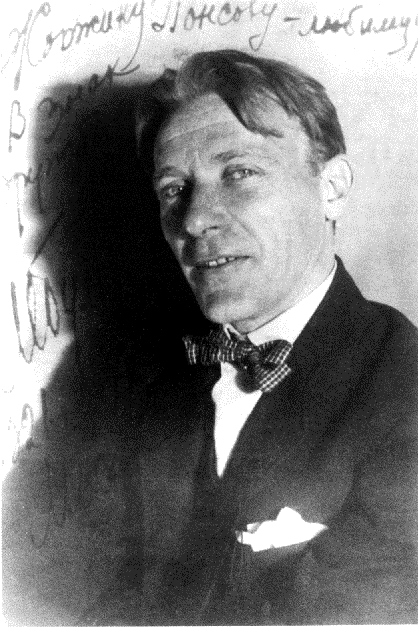
Bulgakov is also the author of The White Guard, written between 1923 and 1926. The novel is set in the Ukrainian civil war. Kiev is under the authority of a hetman placed in power by the German occupation troops, but the nationalist armies of “Petliura” (according to the spelling of the French translation) are approaching, while in the East the Bolshevik revolution is roaring. From the very beginning, the narrator points out that the civil war is seen as the birth of a new world: « Great and terrible was the year of Our Lord 1918, of the Revolution the second ». As has often been noted, The White Guard is in some respects a tragi-comic rewriting of Tolstoy’s masterpiece, War and Peace. For “that year”, 1918, in Ukraine, there is no question of detecting any messianic providence in historical events, but rather its parody. The authorities in Kiev, subjected to the occupier, decamp, while the armies of Petliura, the nationalist leader expected as the messiah, advance…
The White Guard begins with a personal mourning. The narrator, like Bulgakov at that time, has just lost his mother. The way in which history with a capital “H” meets personal life, individual history forms the framework of the novel, throughout which Bulgakov plays with the signifier “Petliura”, pronounced “Petourra” by the Germans. Like a “Christ”, a messiah, people assure that he exists, without his existence being embodied in any other way than in the form of a signifier: Petlioura, Petourra, petliouriser. When the nationalist armies took over the city, some thought they recognised him here, while others claimed to have seen him there. He is everywhere and nowhere at the same time. Does he really exist? Or is it an illusion as persistent as the meaning we attribute to history? And is he a messianic or diabolical figure? The answer is given at the end of the novel, when Bulgakov places the hitherto discreet, but insistent leitmotif of anti-Semitism at the centre of the story. Unlike Sienkiewicz’s novel (By Iron and Fire, 1884), where the anti-Semitic apotheosis of the Cossack revolution remains a detail of the story, Bulgakov makes it the ultimate motif of his narrative. We are then in 1919, a year “even more terrible” than the previous one, says the narrator, who immediately relates a micro-event that took place in Kiev, after Petliura’s armies had conquered the city: a Jew, dressed in black, is beaten to death on a bridge by Cossacks. When this is done, the Cossack horsemen disappear. « All that remained was the stiffening corpse of a Jew on the approach to the bridge, some trampled hay and horse-dung». Then the lesson of history intervenes:
« Referring to the writing of The White Guard and the obstacles to its publication, Laure Troubetzkoy, the translator of the French edition, explains: « The rocky and dramatic circumstances of this aborted publication were later evoked in the first chapters of The Theatrical Novel, whose hero, the unfortunate author of the novel Black Snow, inherited not only Bulgakov’s misfortunes, but also his predilection for colourful titles.[10] »
The Black Snow, the fictional title of The White Guard, refers to Celan’s poem “Schwarze Flocken”,« Black Flakes », in which he speaks of the « hetman » and the « hoofs » of the Cossack horsemen who « crush the song of the cedar ». And « the green Ukrainian grass » which, in spring,« weave its carpet over the earth », immediately evokes the dandelions of the poem in Poppy and Memory and the blond hair of the murdered mother. Finally, Bulgakov’s conclusion about the pogroms perpetrated by Petliura’s armies, condensed in the image of this “the stiffening corpse of a Jew“, echoes Celan’s “psalm”: « No one kneads us again out of earth and clay, / no one incants our dust. / No one ».
The question is thus raised, in the light of the poem: was the Jewish anarchist Scholem Schwartzbard who murdered Petloura in Paris an “agent of Moscow” or an agent of no one?
Ivan Segré
Notes
| 1 | Translation : Pierre Joris, https://pierrejoris.com/blog/black-flakes-schwarze-flocken-celan-ukraine/ |
| 2 | http://ukraine-memoire.fr/lhistoire-mouvementee-de-la-bibliotheque-ukrainienne-symon-petlura-a-paris/ |
| 3 | Henri Minczeles, Histoire générale du Bund, Denoël, 1999, pp. 263-264 |
| 4 | See also: Thomas Chopard, « Le procès Schwartzbard et le métier d’historien », Cahiers du monde russe [En ligne], 58/4 | 2017, published on October 1 2017, consulted on July 19 2022. URL : http://journals.openedition.org/monderusse/10160 ; DOI : https://doi.org/10.4000/monderusse.10160 |
| 5 | https://mahj.org/fr/decouvrir-collections-betsalel/monument-a-paul-celan-czernowitz-ukraine-55365 |
| 6 | Translation : Pierre Joris. https://poets.org/poem/aspen-tree |
| 7 | Translation : Michael Hamburger. https://mwpm.wordpress.com/2015/11/23/paul-celans-nineteen-poems/ |
| 8 | Translation : Michael Hamburger. https://www.latimes.com/archives/la-xpm-1999-feb-21-bk-10000-story.html |
| 9 | Traduction : Pierre Joris. https://pierrejoris.com/blog/black-flakes-schwarze-flocken-celan-ukraine/ |
| 10 | Boulgakov, The Whithe Guard, Translated from the Russian by MICHAEL GLENNY, McGraw-Hill Book, 1971. |
